The Photo Tour to the Manu Reserved Zone is a unique adventure for photographers and nature lovers. Imagine exploring the deep Amazon rainforest, with your cameras ready to capture monkeys, macaws, giant otters, spectacled bears, and even the elusive jaguar. This region is part of the Manu National Park, recognized by UNESCO as a World Heritage Site and Biosphere Reserve, and one of the most biodiverse places on Earth. It’s located in the lower Manu River area, between the regions of Cusco and Madre de Dios. Only controlled tourism is allowed here through authorized agencies, which ensures an almost untouched natural environment. An Photo Tour to the Manu Reserved Zone will take you from mountain highlands to lowland rainforest, capturing giant trees, flowers, and exotic animals all in one trip.
The Zona Reservada del Manu encompasses rivers and oxbow lakes surrounded by jungle. From Cusco to Boca Manu, the journey offers mountain and tropical rainforest landscapes. It extends from the Panagua River ravine to Boca Manu. The typical route is to travel by bus or van from Cusco to Pilcopata (6–7 hours), then take a boat from the port of Atalaya downstream to Boca Manu. This road-and-river journey is already an unforgettable experience, offering views of Andean terraces and jungle valleys. Planning ahead is crucial: there are no regular flights to the lower Manu, so it’s recommended to book ground and river transport in advance. Along the route, you’ll pass through native communities (such as Diamante, of the Yine ethnicity) and finally reach the lodge at Boca Manu, gateway to the Zona Reservada.
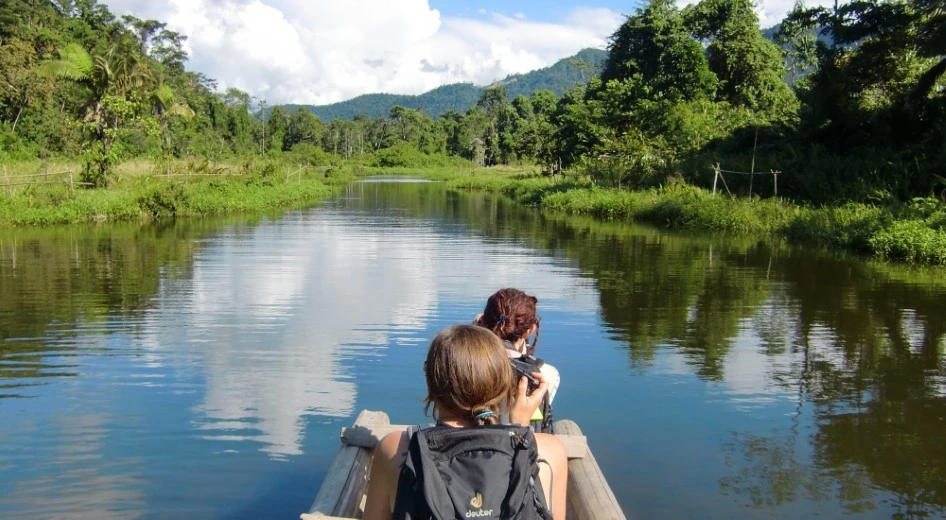
Where is the Zona Reservada del Manu and how to get there?
Location
The Zona Reservada del Manu is located in the southern Peruvian Amazon rainforest, within the Manu National Park. It lies between the regions of Madre de Dios and Cusco, specifically in the lower Manu River area. Although part of the Manu Biosphere Reserve, this area differs from the core (untouchable) zone by being the only part of the park open to tourism. From the river port of Atalaya to Boca Manu, the area is filled with oxbow lakes rich in wildlife.
How to get to the Zona Reservada del Manu
The most common way to get there is by booking an organized tour (ensuring safe transport along rural roads and river rafting). Tours usually depart early from Cusco or Paucartambo to Pilcopata via mountain road. From Pilcopata, a shared taxi or van takes you to the port of Atalaya. In Atalaya, you board a motorboat and navigate 5–6 hours on the Madre de Dios and Manu Rivers to Boca Manu. This river journey crosses rapids and dense jungle, perfect for taking early shots from the boat. It’s advisable to bring a rain jacket and protect your camera gear, as the ride can be bumpy. Once in Boca Manu, the photo expeditions begin: expert guides lead hikes and safaris on land and water through the Zona Reservada.
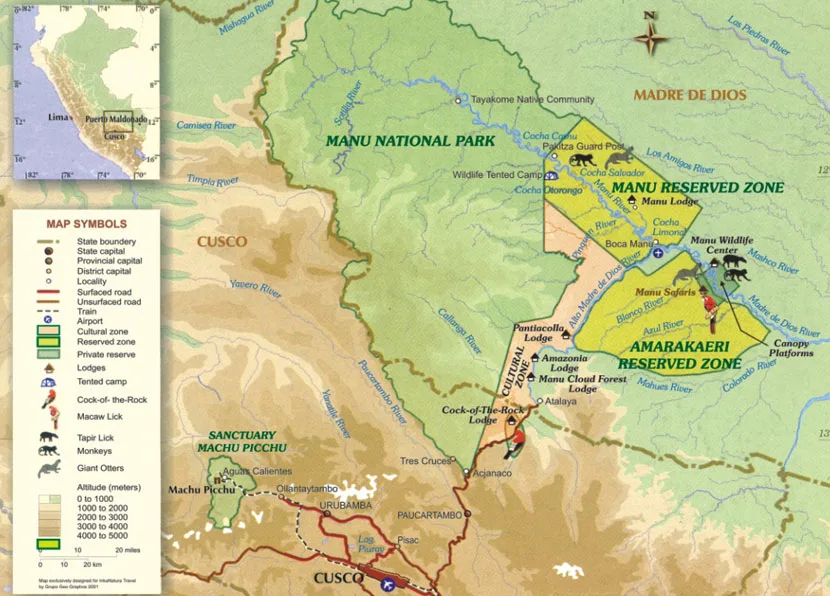
What activities can you do in the Zona Reservada del Manu?
During your photo journey, you can enjoy numerous activities designed to observe and photograph wildlife:
- Exploration of the Andean cloud forest: Walk through one of the richest ecosystems in biodiversity. Spot quetzals, toucans, trogons, and the Andean cock-of-the-rock, surrounded by orchids, ferns, and waterfalls in a misty, high-altitude setting.
- Wildlife watching from the Manu River: Sail down one of the most biodiverse rivers in the world. Spot jaguars, black caimans, turtles, exotic birds, and monkeys in their natural habitat, especially early in the morning.
- Visit to Cocha Salvador and Cocha Otorongo lakes: Home to giant otters, howler monkeys, and agami herons, along with other species rarely seen elsewhere.
- 20-meter observation tower: Ideal for photography and spotting wildlife hidden from ground view.
- Hiking through the tropical rainforest: Walk hidden trails looking for peccaries, capuchin monkeys, medicinal trees, and exotic plants. Your guide will explain the traditional uses and secrets of Amazonian vegetation.
- Cultural encounter with the Matsiguenka community: Learn about the customs, language, and lifestyle of this indigenous group living in harmony with the rainforest.
- Night wildlife watching on guided walks: Spot frogs, tarantulas, insects, reptiles, and nocturnal birds in action, led by a skilled naturalist guide.
- Tubing tour on the Palotoa River: Float peacefully in an inflatable tube, surrounded by pristine jungle. A fun and relaxing way to enjoy the rainforest from a different angle.
All these activities make the Photo Tour to the Manu Reserved Zone perfect for both professional photographers and amateurs eager to explore the Amazon rainforest.

What can you photograph in the Zona Reservada del Manu?
On this photo tour, your camera will stay busy. The biodiversity is massive: more than 220 species of mammals, 1000 bird species, 155 amphibians, and 132 reptiles have been recorded throughout Manu. Sample photo subjects include:
- Mammals: You’ll find jaguars (otorongos), giant otters, Amazonian tapirs, sloths, monkeys (capuchins, woolly, howler), deer, and gray brocket deer. Because of their rarity, seeing a jaguar is a major prize: guides often shine lights along the riverbanks at night, where they sometimes come to drink or bathe. Capturing this moment during an Photo Tour to the Manu Reserved Zone is a bucket-list goal for many travelers.
- Birds: A true paradise for bird photographers. Red-and-green macaws, Amazon parrots, toucans, kingfishers, harpy eagles, and king vultures, among many others. The parrot clay licks (colpas) attract hundreds of birds at dawn, offering unique opportunities for an Photo Tour to the Manu Reserved Zone focused on birds.
- Insects and butterflies: Over 30 million insect species have been counted in Manu. There are about 1300 species of colorful butterflies—perfect for macro photography.
- Reptiles and amphibians: Black and white caimans often linger on riverbanks; Amazonian snakes like boas and tree snakes; and multi-colored frogs (like the dart frog, Phyllobates, etc.).
- Plants and landscapes: You’ll photograph giant tropical trees (cedars, Brazil nut trees, lupunas), wild orchids, and ferns. The dense vegetation and cloud forests provide stunning backdrops for any Photo Tour to the Manu Reserved Zone.
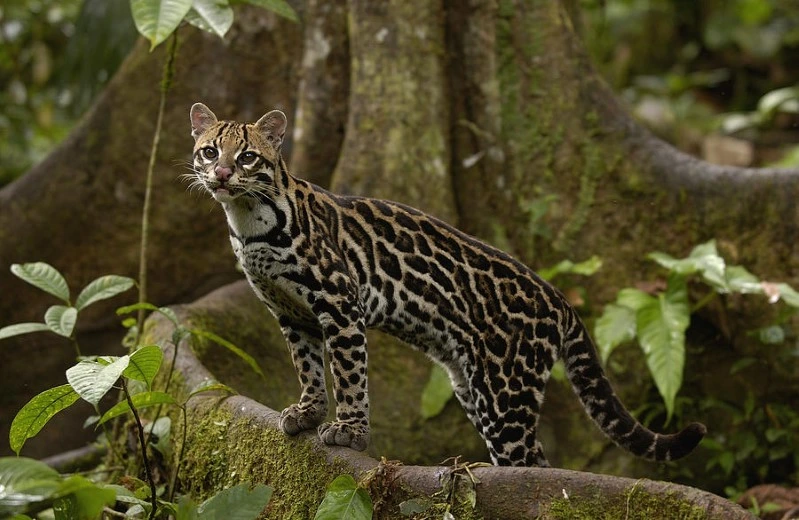
What is the best time for a photo tour in Manu?
The dry season (May to October) is generally the most recommended time to travel to Manu. During these months, rain is scarce, trails are firm, and rivers are navigable. It’s easier to walk through the jungle without so much mud and to take better photos with sunny days. On the other hand, during the rainy season (November to April), the jungle becomes intensely green, and animals tend to be more active in and along the rivers. This rainy season offers lush landscapes and mystical foggy nights. However, it also means difficult trails, heavy rain, and more mosquitoes. If your goal is an Photo Tour to the Manu Reserved Zone during the rainy season, be prepared with waterproof gear and flexibility in your itinerary.
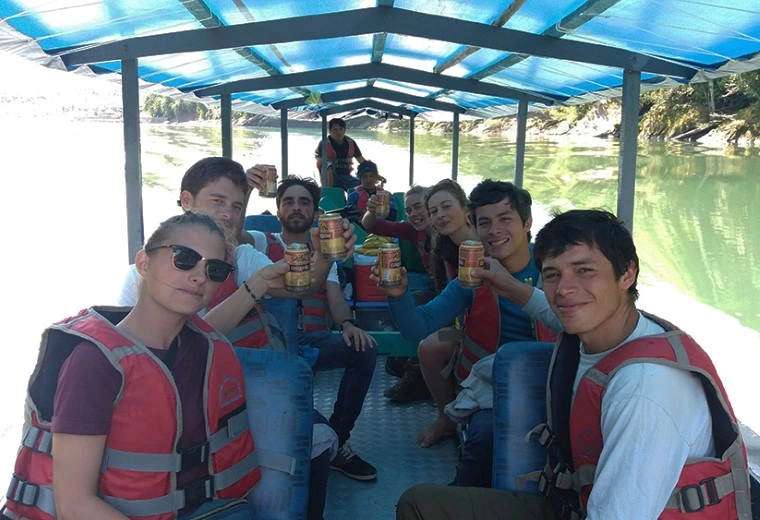
Tips and recommendations for the photo expedition
- Travel with expert guides: Book your packages through established agencies. For example, operators with years of experience, such as Peru Jungle Trips, guarantee well-organized itineraries and safety. This agency is well known for its specialization in photo expeditions to the Zona Reservada del Manu.
- Proper equipment: Bring lightweight, quick-dry clothing, a rain jacket, and non-slip hiking boots. Use strong insect repellent and biodegradable sunscreen.
- Health documents: Always carry your yellow fever vaccination card, as it is mandatory in the jungle.
- Photography gear: Protect your camera with waterproof covers or airtight bags. Bring extra batteries and memory cards. A telephoto lens and macro lens are ideal to get the most out of your Photo Tour to the Manu Reserved Zone.
- Plan ahead: Book your flights to Lima and Cusco in advance. Book the tour (a typical 4–7 day trip in the Reserved Zone) at least one month before your departure.
- Respect nature: Always follow the guide’s instructions and stay quiet when approaching wildlife. Avoid using direct flash on wildlife so as not to disturb them.
Frequently Asked Questions about the Photo Tour to the Manu Reserved Zone
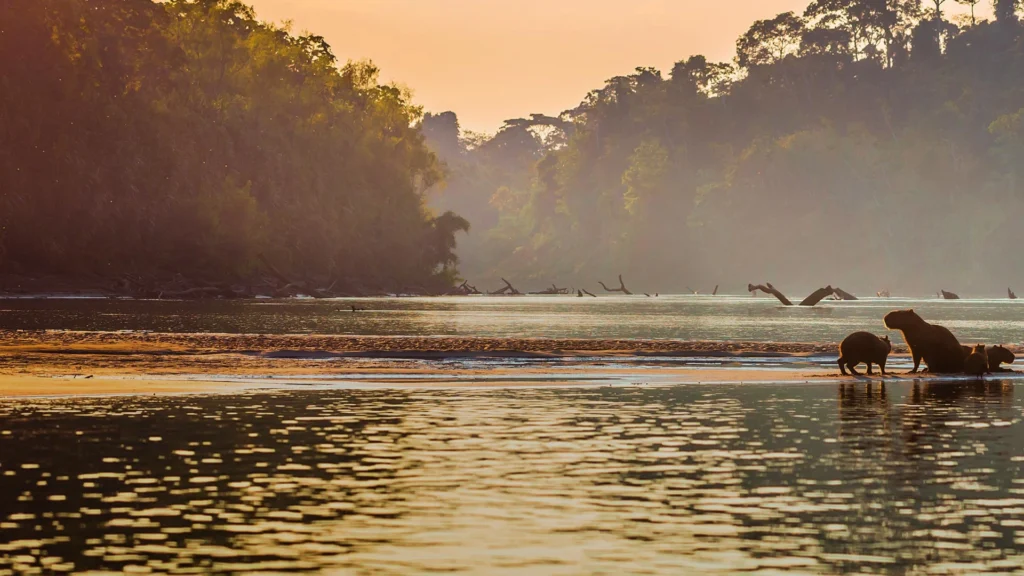
1. What is the difference between the Zona Reservada del Manu and the Manu National Park?
The Reserved Zone is a sub-area of the park designated for ecotourism. In the Reserved Zone, organized tours are allowed to photograph fauna and flora. In contrast, the rest of the park includes the core or intangible zone, where tourists are not allowed. There is also a cultural (buffer) zone with communities that is accessible without a guide, but it has less biodiversity.
2. Is it possible to see jaguars or pumas on the Manu expedition?
The jaguar is one of the most emblematic mammals of Manu. In the Reserved Zone, the otorongo (Panthera onca) lives, although it is elusive. Guides are trained to track signs and usually try to spot them at dawn or dusk near the rivers. Many travelers consider the chance to see this big cat one of the main highlights of the Photo Tour to the Manu Reserved Zone.
3. Do I need special permits or vaccines to visit the Reserved Zone of Manu?
To enter Manu, you must show your ID and usually your yellow fever vaccination card. Tour agencies handle entrance tickets and permits from SERNANP.
4. Which agencies are recommended for this photo expedition to the Zona Reservada del Manu?
There are several operators specialized in Manu. The most recommended agency is Peru Jungle Trips for its experience in photo tours and logistics in the Amazon. They offer custom tours with expert guides to enjoy a truly authentic Photo Tour to the Manu Reserved Zone.
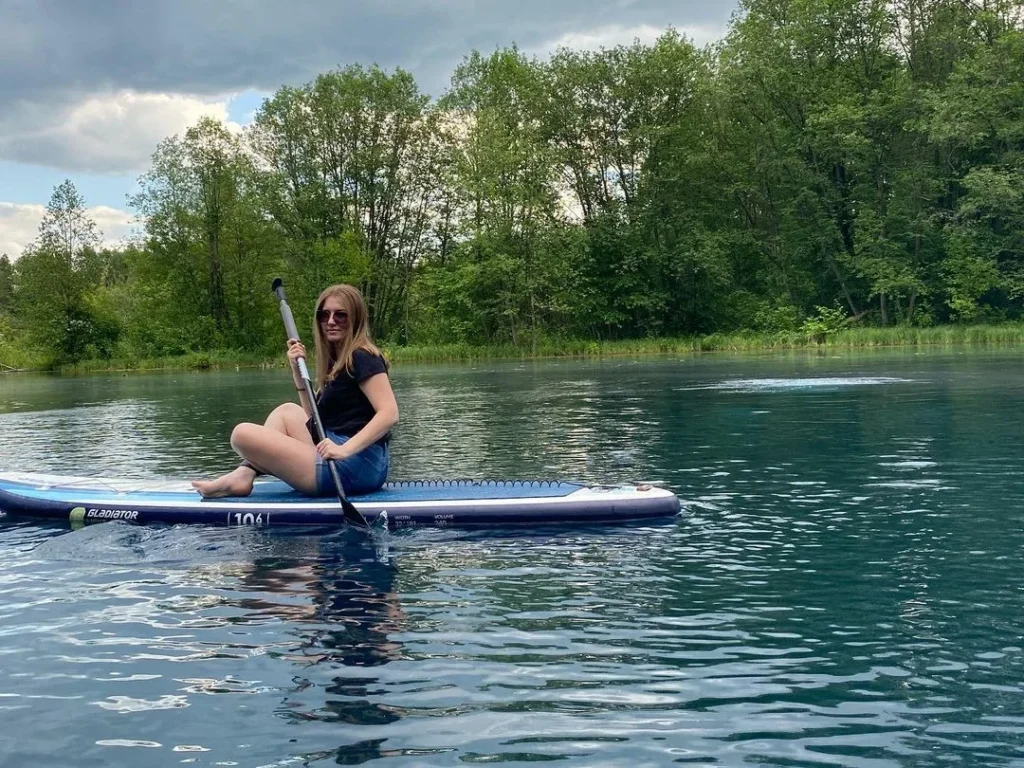
A photo expedition to the Zona Reservada del Manu promises an unforgettable adventure. With a solid plan, the right gear, and a local guide, you’ll capture wildlife in its natural Amazonian habitat. The Photo Tour to the Manu Reserved Zone is a visual journey through the Peruvian jungle, home to more than 1,000 bird species, jaguars, and giant otters. From cloud forests to jungle lakes, you’ll experience a unique connection with nature. Ideal for both professional and amateur photographers, this guided tour reveals the hidden richness of Manu National Park. Contact us and book your trip to the Zona Reservada del Manu.

